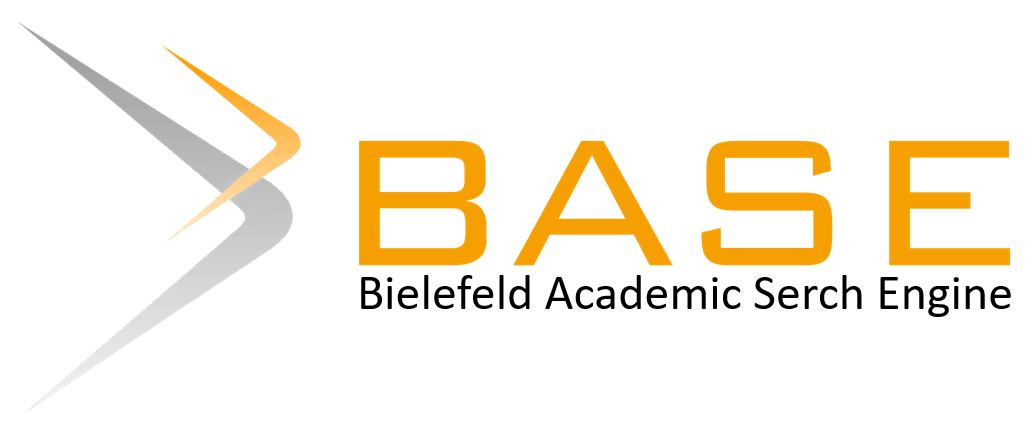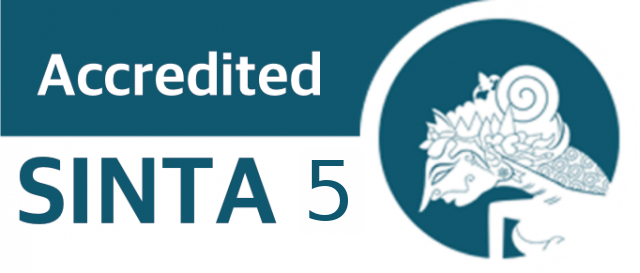Effectiveness of Low Molecular Weight Fucoidan and High Stability Fucoxanthin (LMF- HSFX) in Phaeophyta as Bioactivity in Emergency Therapy of Non-Alcoholic Fatty Liver Disease (NAFLD)
DOI:
https://doi.org/10.30595/hmj.v7i1.23150Keywords:
Phaeophyta, Low Molecular Weight Fucoidan, High Stability Fucoxanthin, Non-Alcoholic Fatty Liver Disease, Bioactivity, Biocompatibility, Hepatic lipotoxicityAbstract
Indonesia is a maritime nation with a rich marine ecosystem and biodiversity. The waters are abundant in Phaeophyta (brown algae), which are a significant source of bioactive compounds such as fucoidan and fucoxanthin. These compounds have shown potential in treating Non-Alcoholic Fatty Liver Disease (NAFLD), a metabolic disorder characterized by excessive fat accumulation in the liver, leading to complications such as fibrosis, cirrhosis, and hepatocellular carcinoma. The objective of this study is to evaluate the effectiveness of Low Molecular Weight Fucoidan (LMF) and High Stability Fucoxanthin (HSFx) in the curative treatment of NAFLD. Specifically, the study aims to assess the bioactivity and biocompatibility of LMF-HSFx and compare its efficacy with a placebo group in the treatment of NAFLD. The study used a non-invasive Fibroscan to test Controlled Attenuation Parameter (CAP) and Transient Elastography on NAFLD patients. It included 42 NAFLD patients, divided into two groups: the LMF-HSFx group and the placebo group. The LMF-HSFx group received oral supplementation of 825 mg LMF fucoidan and 825 mg HSFx twice daily for six months. The effectiveness of the treatment was measured through changes in hepatic lipotoxicity, serum markers, and pro-inflammatory cytokines. The results showed significant reductions in hepatic lipotoxicity, serum alanine aminotransferase (ALT), aspartate aminotransferase (AST), total cholesterol, and triglycerides in the LMF-HSFx group. The study also observed significant reductions in pro-inflammatory cytokines (IL-6 and IFN-γ) and improvements in adiponectin and leptin levels. These findings suggest that the LMF-HSFx combination effectively reduces hepatic inflammation and improves metabolic parameters in NAFLD patients.
References
1. Litaay C. DISTRIBUTIONAND DIVERSITY OF MACRO ALGAE COMMUNITIES
IN THE AMBON BAY [Internet]. Vol. 6, Journal of Tropical Marine Science and Technology. Available from: http://itk.fpik.ipb.ac.id/ej_itkt61
2. Aulia A. Morphological identification of some species of Phaeophyta members at Cibeureum Palm Beach, Anyer, Banten. 2021;1.
3. Shih PH, Shiue SJ, Chen CN, Cheng SW, Lin HY, Wu LW, et al. Fucoidan and Fucoxanthin Attenuate Hepatic Steatosis and Inflammation of NAFLD through Modulation of Leptin/Adiponectin Axis. Mar Drugs. 2021 Mar 12;19(3):148.
4. El Rashed ZeinabGElenaKH. Brown-Algae Polysaccharides as Active Constituents against Nonalcoholic Fatty Liver Disease. 2020;
5. Hidayati JR, Bahry MS, Karlina I, Yudiati E. Antioxidant Activity and Bioactive Compounds of Tropical Brown Algae Padina sp. from Bintan Island, Indonesia. Journal of Tropical Marine. 2022 Nov 1;25(3):309-19.
6. Younossi ZM, Wong G, Anstee QM, Henry L. The Global Burden of Liver Disease. Clinical Gastroenterology and Hepatology. Jul 2023;21(8):1978-91.
7. Cheemerla DBM. Global Epidemiology of Chronic Liver Disease. PubMed. 2021;17:365-70.
8. Collaborators GBDC. The global, regional, and national burden of cirrhosis by cause in 195 countries and territories, 1990-2017: A systematic analysis for the Global Burden of Disease Study 2017. Lancet Gastroenterol. 2020;5:245-66.
9. Kazankov K JSTKMH. The role of macrophages in nonalcoholic fatty liver disease and nonalcoholic steatohepatitis. . Nat Rev Gastroenterol. 2019;16:145-59.
10. Mantovani A, Dalbeni A. Treatments for nafld: State of art. Vol. 22, International Journal of Molecular Sciences. MDPI AG; 2021. p. 1-27.
11. Wayan Rosiana I, Angga Wiradana P, Gede Widhiantara I, Agung Ayu Putri Permatasari A, Kadek Yunita Sari N, Made Gde Sudyadnyana Sandhika I, et al. An Overview of Brown Macroalgae Extract Against Fatty Liver Disease Caused by Metabolic Dysfunction: Animal Models and Evidence in Human Trials. Vol. 2023, Chem. Bull.
12. Lourenco-Lopes C; FCM; JLC; CM; PA; GOP, Prieto M; SGJ. Biological action mechanism of fucoxanthin extracted from algae for application in food and cosmetic industries. Trends Food Sci. 2021;(117):163-81.
13. Murase W; KY; KS; YA; WM; KA, Kojima H; OT; TM; MM; et al. Fucochanthin Prevents Pancreatic Tumorigenesis in C57BL/6J Mice That Received Allogenic and Orthotopic Transplants of Cancer Cells. PubMed. 2021;22:13620.
14. Terasaki M; KA; KH; MH; MK; KC;, Mutoh M; TT. Fucoxanthin and Colorectal Cancer Prevention. CrossRef. 2021;13:2379.
15. Suprunchuk VE. Low-molecular-weight fucoidan: Chemical modification, synthesis of its oligomeric fragments and mimetics. Carbohydr Res. 2019 Nov;485:107806.
16. Din NAS, Mohd Alayudin 'Ain Sajda, Sofian-Seng NS, Rahman HA, Mohd Razali NS, Lim SJ, et al. Brown Algae as Functional Food Source of Fucoxanthin: A Review. Vol. 11, Foods. MDPI; 2022.
17. Luthuli S; WS; CY; ZX; WM; TH. Therapeutic Effects of Fucoidan: A Review on Recent Studies. CrossRef. 2019;17:487.
18. Citkowska A, Szekalska M, Winnicka K. Possibilities of Fucoidan Utilization in the Development of Pharmaceutical Dosage Forms. Mar Drugs. 2019 Aug 5;17(8):458.
19. Winarto J, Song DG, Pan CH. The Role of Fucoxanthin in Non-Alcoholic Fatty Liver Disease. Int J Mol Sci. May 2023;24(9):8203.
20. Ren T, Zhu L, Shen Y, Mou Q, Lin T, Feng H. Protection of hepatocyte mitochondrial function by blueberry juice and probiotics via SIRT1 regulation in non-alcoholic fatty liver disease. CrossRef. 2019;10:1540-51.
21. Raffaele M, Bellner L, Singh SP, Favero G, Rezzani R, Rodella LF, et al. Epoxyeicoisatrienoic intervention improves NAFLD in leptin receptor deficient mice by an increase in PGC1α-HO-1-PGC1α- mitochondrial signaling. PubMed. 2019;(380):180-7.
Downloads
Published
Issue
Section
License
For submission of manuscripts to the Herb-Medicine Journal, the authors must certify that:
I have been authorized by my co-author to submit the manuscript to the Herb-Medicine Journal
I hereby declare, on behalf of myself and my co-authors, that:
The submitted manuscript is original work and has not been published in another peer-reviewed journal or is being considered for publication by another journal. Also, the manuscript does not infringe any existing copyright or other third party rights.
The manuscript does not contain material that may violate the law, slander, or SARA, in any way, violates the terms and conditions contained in the agreement
I/we have taken care that the scientific knowledge and all other statements contained in the manuscript are in accordance with authentic facts and formulas and will not, if followed appropriately, harm the user
No liability shall be assumed by Herb-Medicine Journal, its staff or members of the editorial board for any injury and/or damage to persons or property as a matter of product liability, negligence or otherwise, or from the use or operation of any method, product instructions, advertising , or ideas contained in publications by the Herb-Medicine Journal
Authors who publish in the Herb-Medicine Journal certify that all authors have read and agree to the contents of the Cover Letter or the Terms and Conditions. Plagiarism is strictly prohibited, and by submitting a manuscript for publication, the author agrees that the publisher has the legal right to take appropriate action against the author, if plagiarism or false information is found. Once submitted to the Herb-Medicine Journal, authors will not withdraw their manuscript at any stage prior to publication.
The author owns the copyright and grants the journal rights for first publication with the work simultaneously licensed under a Creative Commons Attribution License which allows others to share the work with acknowledgment of the work's authorship and initial publication in this journal.
Authors may enter into separate additional contractual agreements for the non-exclusive distribution of the published journal version of the work (for example, posting it to an institutional repository or publishing it in a book), with acknowledgment of its initial publication in this journal.
Authors are permitted and encouraged to post their work online (for example, in institutional repositories or on their websites) prior to and during the submission process, as this can lead to productive exchanges, as well as earlier and larger citation of published work (See The Effects of Open Access).
Untuk pengiriman naskah ke Herb-Medicine Journal, penulis harus menyatakan bahwa:
- Saya telah diberikan otorisasi oleh rekan penulis saya untuk memasukkan naskah ke Herb-Medicine Journal
- Saya dengan ini menyatakan, atas nama saya dan rekan penulis saya, bahwa:
- Naskah yang dikirimkan adalah karya asli dan belum pernah diterbitkan dalam jurnal peer-review lain atau sedang dipertimbangkan untuk diterbitkan oleh jurnal lain. Serta, naskah tidak melanggar hak cipta yang ada atau hak pihak ketiga lainnya.
- Naskah tidak mengandung materi yang mungkin melanggar hukum, memfitnah, atau SARA, dengan cara apa pun, melanggar syarat dan ketentuan yang tercantum dalam perjanjian
- Saya / kami telah berhati-hati bahwa pengetahuan ilmiah dan semua pernyataan lain yang terkandung dalam naskah sesuai dengan fakta dan formula otentik dan tidak akan, jika diikuti dengan tepat, merugikan pengguna
- Tidak ada tanggung jawab yang ditanggung oleh Herb-Medicine Journal, stafnya atau anggota dewan editorial untuk setiap cedera dan/atau kerusakan pada orang atau properti sebagai masalah pertanggungjawaban produk, kelalaian atau sebaliknya, atau dari penggunaan atau pengoperasian metode, produk apa pun instruksi, iklan, atau ide yang terkandung dalam publikasi oleh Herb-Medicine Journal
Penulis yang menerbitkan dalam Herb-Medicine Journal menyatakan bahwa semua penulis telah membaca dan menyetujui isi Surat Pengantar atau Syarat dan Ketentuan. Plagiarisme dilarang keras, dan dengan menyerahkan naskah untuk publikasi, penulis setuju bahwa penerbit memiliki hak hukum untuk mengambil tindakan yang pantas terhadap penulis, jika ditemukan plagiarisme atau informasi palsu. Setelah diserahkan ke Herb-Medicine Journal, penulis tidak akan menarik naskah mereka pada tahap apa pun sebelum dipublikasikan.
Penulis memiliki hak cipta dan memberikan hak jurnal untuk publikasi pertama dengan karya yang secara simultan dilisensikan di bawah Lisensi Creative Commons Attribution yang memungkinkan orang lain untuk berbagi karya dengan pengakuan kepengarangan karya dan publikasi awal dalam jurnal ini.
Penulis dapat membuat perjanjian kontrak tambahan yang terpisah untuk distribusi non-eksklusif versi jurnal yang diterbitkan dari karya tersebut (misalnya, mempostingnya ke repositori institusional atau menerbitkannya dalam sebuah buku), dengan pengakuan atas publikasi awalnya di jurnal ini.
Penulis diizinkan dan didorong untuk memposting pekerjaan mereka secara online (misalnya, dalam repositori institusional atau di situs web mereka) sebelum dan selama proses pengajuan, karena dapat menyebabkan pertukaran yang produktif, serta kutipan yang lebih awal dan lebih besar dari karya yang diterbitkan (Lihat The Effect of Open Access).













